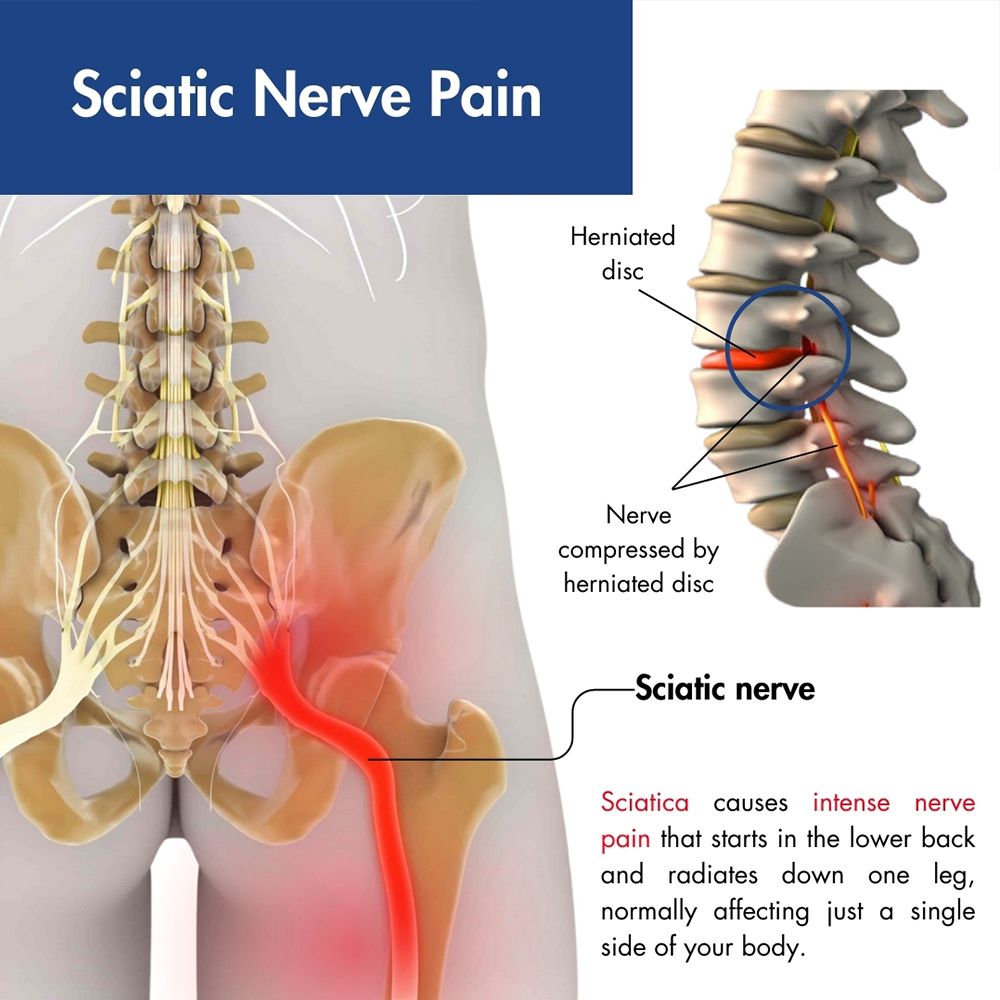We’re pleased to announce that Pain Physicians of Wisconsin is now Pro Spine Pain.
We’re pleased to announce that Pain Physicians of Wisconsin is now Pro Spine Pain.
While sciatica might not rank as the primary culprit for crippling back pain, when you’re suffering from it, finding effective sciatica treatments becomes your top priority. Sciatica causes intense nerve pain that starts in the lower back and radiates down one leg, normally affecting just a single side of your body. Often stemming from a pinched nerve, it demands urgent relief. Seek a swift resolution at Pro Spine & Pain’s accessible facilities. From five convenient locations in Wisconsin, our foremost pain specialists await, equipped with a variety of potent solutions tailored for sciatica. Act now to alleviate your discomfort by calling today.
Sciatica is characterized by debilitating back pain stemming from a pinched sciatic nerve. Its path traces from the lower back, through the hips and buttocks, down the leg, often affecting just one side of the body. As many as 85% of Americans are affected by lower back pain. Sciatica is one common cause, but other causes of debilitating back pain include: fractures, spinal cord injuries, degenerative disc disease, radiculopathy, herniated discs, spondylosis, and spinal stenosis.
Understanding the root of your back pain and delivering the best treatment is the primary objective of Pro Spine & Pain’s expert pain specialists. Left untreated, even minor back discomfort can escalate into more serious issues. Sciatica impedes movement and worsens without proper diagnosis and care. Contact us now to regain your mobility and alleviate your pain.
The sciatic nerve, the largest in the body, originates from nerve roots near the base of the spine and serves as the primary nerve in the leg. When symptoms of sciatica arise, typically in the lower back, it’s often due to compression or pinching of this nerve along its pathway, resulting in increased pressure and subsequent pain.
Most individuals experiencing sciatica have an underlying condition that adds to the problem. Your Wisconsin pain doctor will identify all the contributing factors before determining the most suitable treatment plan.
Conditions that may lead to sciatic pain include:
 Sciatica commonly afflicts individuals aged 30 to 50, stemming from the natural wear and tear associated with aging. This often results from arthritis or sudden pressure exerted on the spinal discs that serve as cushions between the vertebrae in the lower back.
Sciatica commonly afflicts individuals aged 30 to 50, stemming from the natural wear and tear associated with aging. This often results from arthritis or sudden pressure exerted on the spinal discs that serve as cushions between the vertebrae in the lower back.
For those over 50, arthritis or the formation of bone spurs on the vertebrae typically contributes to sciatica.
Besides age, lifestyle factors can heighten the risk of developing a pinched nerve in the lower back, including:
The sciatic nerve governs both the direct motor functions of your hips and hamstrings and the indirect motor functions of your calf muscles, lower leg muscles, and certain foot muscles. If you frequently experience your leg “falling asleep,” it could be a sign of sciatica. Sensations of pins and needles, along with numbness, often indicate a compressed nerve.
Pain is a common complaint among sufferers, typically felt more acutely in the buttocks, leg, and foot rather than in the lower back. Pain descriptors vary, ranging from dull and achy to sharp, with electric shocks or burning sensations. Your sciatic nerve pain specialist can pinpoint the precise location of sciatic nerve issues based on symptoms such as:
Nearly 90 percent of individuals suffering from sciatica pain discover relief through minimally invasive, non-surgical sciatic nerve treatment. Consider over-the-counter medications like ibuprofen or aspirin, coupled with a muscle relaxant, and experiment with applying a heating pad or ice packs to the affected area for potential relief.
Contrary to common belief, long-term bed rest is not recommended. Instead, Wisconsin pain experts advise maintaining mobility to reduce inflammation and promote healthy blood circulation in the legs while addressing the pinched nerve. Your back specialist at our spine and pain center will typically suggest non-invasive treatments at first.
Such conservative treatments for sciatica include:
If non-invasive treatments fail to achieve pain relief within three months, some type of surgery for sciatica nerve may be necessary to address your issues.
Your advanced spine and pain doctor might recommend some of the following effective sciatica surgery:
To minimize the likelihood of sciatica recurrence, it’s crucial to implement lifestyle adjustments. Our expert team advises reducing excess weight and monitoring your dietary habits. It’s also important to maintain proper posture during activities such as standing, lifting, and sitting, including while driving. When seated, use a rolled towel or pillow to support your lower back and ensure your hips and knees remain level.
Incorporating regular exercise and stretching routines into your day is essential to keep spine and leg muscles supple. If you’re a smoker, quitting is highly recommended, as smoking can obstruct blood vessels. Seeking guidance from a reputable Wisconsin spine and pain specialist at the onset of back discomfort can help avoid the need for sciatic nerve surgery. Reach out to Pro Spine & Pain today to schedule an appointment for sciatic nerve pain relief.

Thomas Stauss, MD, completed both his undergraduate and medical studies at the esteemed University of Wisconsin in Madison. Dr. Stauss values having access to a wide array of cutting-edge treatment options, ensuring effective relief for his patients' discomfort and a significant enhancement in their quality of life. More specifically, he specializes in utilizing implanted devices to manage chronic pain. Dr. Stauss’s primary objective is to uphold the dignity of each patient while delivering ethical and professional services.
More about Dr. Stauss